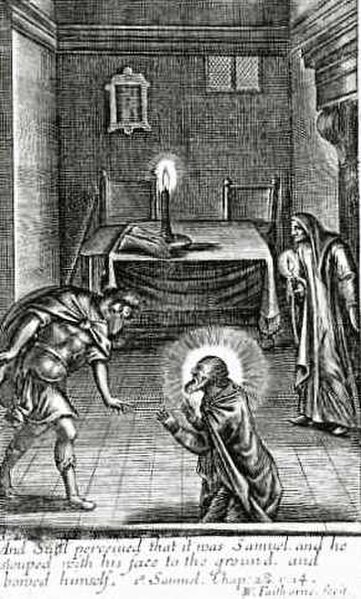Joseph Glanvill was an English writer, philosopher, and clergyman. Not himself a scientist, he has been called "the most skillful apologist of the virtuosi", or in other words the leading propagandist for the approach of the English natural philosophers of the later 17th century. In 1661 he predicted "To converse at the distance of the Indes by means of sympathetic conveyances may be as natural to future times as to us is a literary correspondence."
Joseph Glanvill, 1681 engraving by William Faithorne.
The Witch of Endor: from the frontispiece to Glanvill's Saducismus Triumphatus
The Abbey Church of Saint Peter and Saint Paul, commonly known as Bath Abbey, is a parish church of the Church of England and former Benedictine monastery in Bath, Somerset, England. Founded in the 7th century, it was reorganised in the 10th century and rebuilt in the 12th and 16th centuries; major restoration work was carried out by Sir George Gilbert Scott in the 1860s. It is one of the largest examples of Perpendicular Gothic architecture in the West Country. The medieval abbey church served as a sometime cathedral of a bishop. After long contention between churchmen in Bath and Wells the seat of the Diocese of Bath and Wells was later consolidated at Wells Cathedral. The Benedictine community was dissolved in 1539 during the Dissolution of the Monasteries.
Bath Abbey as viewed from the south-west
Looking west from the choir, the fan vaulting is mostly 19th-century
On the west front, angels climb Jacob's Ladder
The abbey in 1875






